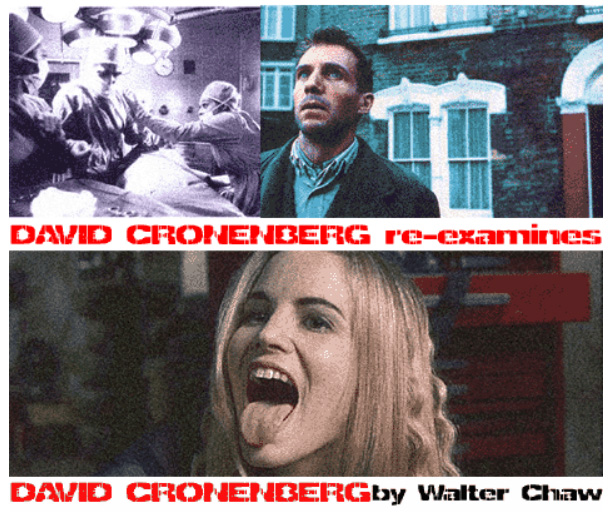****/**** Image B- Sound A Extras A
starring Damian Lewis, Abigail Breslin, Amy Ryan
written and directed by Lodge Kerrigan
by Walter Chaw Lodge Kerrigan's astounding Keane deals with not only madness and the loss of a child but also our preconceptions of the cold universe and, shaving it precisely, our expectations for the kinds of cold comfort we expect film to provide. It's wrong to call it experimental, because the decision to shoot in four-minute takes doesn't announce itself as a gimmick as much as it settles comfortably into a groove alternating small explosions and lulls laced with anticipation. A lot of movies pay lip-service to carving space for their actors to find their way around difficult characters and emotionally taxing scenes–Keane actually does it. It's about the belief that there are no certainties in life, and it understands that trusting–and loving–in a world so swiftly lurching is akin to a kind of insanity. When we meet William Keane (Damian Lewis), as he's reeling around the Port Authority Bus Terminal looking for his daughter, it takes us a few minutes to realize that his daughter (if he's ever even had a daughter) has been missing for a year and that his desperate attempts to find a witness to her abduction in the river of passers-by is spiced by a little too much stale urgency. Keane might be crazy. He also has good reason to be.
|
There's nothing like backstory in Keane except what we can glean from the events as they unfold. As Keane engages in a speed-assisted tryst in a seedy nightclub's bathroom stall (he tells her she's beautiful and she pauses a heartbreaking moment to savour it), you wonder if he's trying to impregnate her and resurrect, somehow, his missing daughter. But Keane doesn't tell you. And it's to the film's credit that it makes you wonder why Keane is doing what he's doing (and fear that he's capable of doing anything), how he maintains normality long enough to befriend neighbour Lynn (Amy Ryan) and her young daughter Kira (Abigail Breslin), and whether Kira's in any kind of danger should the dam finally break. What so wounds is Lewis's performance and Kerrigan's script, which together have the generosity and wisdom to see Keane as utterly human in every one of his bi-polar/schizophrenic incarnations. Yet there are no soft moments in the picture. The afternoon Keane spends with Kira when Lynn can't pick her up from school is laced with all the perils facing a young girl in the company of an unbalanced stranger, one who, clearly, has equated Kira with his own lost child. Still, Kerrigan manages not to turn his film into some sort of exploitation film as Keane, save his little "turns," seems like a great father.
It's a complicated thing, these relationships, and in their intricacy they become indistinguishable from actual relationships. Lynn's husband has abandoned her and, for a while, it appears as though Lynn herself might abandon Kira. At one point, Keane calls someone we presume is his ex-wife; not long after, believing he can sense his daughter's kidnapper in the bus terminal, he picks a man at random and beats the tar out of him. Earlier in the film, his knuckles are bloodied and bruised, and after this scene, we think back to that and understand that he might lose control like this on a regular basis. It's a little of the misplaced existential vengeance of Memento here, but through it all there's this spark of recognition in Keane that he must, at all costs, try not to look mad. It's in that essential, human desire to assimilate oneself, to be accepted and treasured and, finally, trusted and loved, that Keane becomes something more than just another diary of a madman. And in its breathtaking humanism, its illustration of the way we connect to one another (or don't) and how brittle that social fabric can be, the film touches on sublimity. Originally published: November 16, 2005.
THE DVD
by Bill Chambers Magnolia presents Keane on DVD in a 1.78:1 anamorphic widescreen transfer. This is a faithfully grainy rendering of a film that relied on available light (and it should be said that dynamic range is surprisingly rich), but some interlacing issues–namely combing, plus colours tend to shift when the frame features a lot of motion–smudge fine detail. The Dolby Digital 5.1 audio is exquisite, though the mix itself, designed by Larry Blake, is firmly diegetic and therefore unlikely to dazzle home-theatre hobbyists. Ensconced under "bonus materials," the "Steven Soderbergh alternative cut" (see above) is on a par, image- and sound-wise. Previews for The World's Fastest Indian and One Last Thing and an HDNet spot cue up on startup while trailers for Soderbergh's own Bubble, Enron: The Smartest Guys in the Room, Klepto, A League of Ordinary Gentlemen, Pulse, The Seat Filler, and The War Within round out the platter. Originally published: August 8, 2006.






